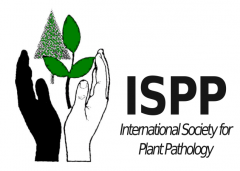FIRST REPORT OF CLADOSPORIUM OXYSPORUM CAUSING LEAF SPOT OF ROSA INDICA IN PAKISTAN
N. Akhtar, M. Nayab
doi: 10.4454/jpp.v98i3.3765
Abstract:
In December 2014, necrotic leaf spots were observed on more than fifty rose (Rosa indica) plants in a private garden at Lahore, Pakistan, all showing the same symptoms The infected plants were 1-2 year old and on an average 90% of the leaves were covered with 2-5 mm circular black spots, with irregu- lar margins without chlorosis around the margins. Initially, infected leaves remained attached to the plants but dropped when the spots coalesced and covered more than 80% leaf area. No symptoms were observed on flowers. For pathogen isolation, one spot per leaf from six symptomatic leaves of dif- ferent plants were cut into pieces, surface sterilized, inoculated on 2% malt extract agar (MEA) and incubated at 25 ± 2oC. Morphological observations were made on 7-day-old pure cul- tures. Colonies were greenish black and attained the diameter of 4 mm. Conidiophores were macronematous, smooth walled, up to 500μm long and 4-5μm wide, with intercalary and termi- nal swellings. Conidia were pale brown arising from terminal swelling of conidiophores, in the form of simple or branched chains. Conidia were spherical, subspherical or limoniform, 3-6 μm in diameter; ramoconidia were 2-4×7-3 μm in size. A representative pure culture of the fungus was deposited to First Fungal Culture Bank of Pakistan under the accession No.FCBP1517. Based on morphology, the fungus was identi- fied as Cladosporium oxysporum (Bensch et al., 2010). For se- quencing of ITS region, a DNA fragment of ca. 600 bp was amplified using universal primer pair ITS1/ITS4 and total ge- nomic DNA as template. BLASTn results indicated that ITS nucleotide sequence of this strain (KT283681) had 99% simi- larity with many other isolates of C. oxysporum in GenBank, including KT936546, LC040920, KJ475816 and JQ775499. Pathogenicity test was performed three times on young pot- ted rose plants using two different isolates. Since the inoculum of this fungus persists in soil, conidia from pure cultures were suspended in sterilized water (107 spores/ml) and sprayed in the soil of three healthy plants; three control plants were treated similarly with sterilized water. All plants, covered with poly- thene bags, were kept in a growth chamber at 23 ± 2oC. Ne- crotic spots similar to those described above started appearing on leaves only on inoculated plants after 21 days of incubation. Re-isolation of same fungus fulfilled Koch’s postulates. To our knowledge, this is the first report of R. indica leaf spot caused by C. oxysporum in Pakistan.




